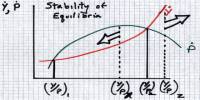A back-end load is defined as a commission or sales fee that investors pay once they sell their investments. It will be a flat fee or gradually decrease over time, usually within five to 10 years. within the latter case, the proportion is highest within the first year and falls until it drops to zero.
A contingent deferred sales charge could be a form of back-end load that depends on the holding period. Back-end loads are referred to as back-end sales charges. Another term for a back-end load is an exit fee.
Back end loads are expressed as a percentage, and they must be disclosed to potential investors in the security’s prospectus. Let’s look at an example.
Assume we invested $10,000 in the ABC Company mutual fund, which has a 4% back end load. After a certain time, the investment has grown to $12,000 and we are ready to sell. Of the $12,000 current value, $480 ($12,000 x .04) is paid to the fund company as a back end load, and the investor walks away with $11,520.
Ideally, the earnings from such an investment should be high enough that, after the rear end load is paid, the investor still includes a net gain. During this example, the investor’s gain is large enough that he still makes a profit after the rear end load is paid.
Generally, funds that have share classes attract sales charges, investors trading these shares are required to pay a commission before selling them. Financial advisors or funds managers earn a commission through the back-end load. This is the commission or sales fee that an investor is charged when selling a share or an investment.
Also, different classes of shares attract different sales charges, as an example, Class A shares attract a front-end load while Class B and Class C shares have backend load. Since mutual funds offer different share classes, different fee structures or sales charges exist. However, it is essential to clarify the redemption fee for a back-end load, both are different terms. Some mutual funds charge redemption fees to enhance the stability of funds and prevent incessant trading.
Sales charges, or loads, are typically utilized by mutual funds and are the simplest way for financial advisors to earn a commission on the sale of a fund’s shares to investors. These mutual funds offer different share classes with different fee structures for investors. A back-end load mustn’t be confused with a redemption fee. Some mutual funds charge a redemption fee to discourage frequent trading, which might interfere with the fund’s investment objective.
Back end loads are most frequently related to mutual funds, but annuities, life assurance policies, and limited partnerships may have face loads similarly. When mutual funds first became popular, most can be purchased only through brokers or financial advisors and that they charged a front-load fee. Because the number and recognition of mutual funds increased, “no-load” and “back end-load” funds soon became the norm.
Although back-end loads are frequently criticized, they do have some advantages:
- Back-end loads discourage overtrading and unnecessary early withdrawals.
- Unlike front-end loads, investors can often avoid back-end load fees by holding the fund for five to ten years.
A back-end load is a percentage of the value of the mutual fund share being sold. For example; an investment of $500 with a sales fee of 5% which is designed to reduce by 1% every year and the back-end load disappears in the sixth year. An increase in the investment may be in the second year will also translate to a back-end load fee of 4% since the back-end load is meant to decrease by 1% every year.
Back end loads and other fees are disclosed in an exceedingly mutual fund’s prospectus, and it’s important to know that aside load is simply one among several varieties of fees that will be charged. Thus, when comparing investments, investors should watch out to judge all fees related to each investment, not just the scale of the rear end load.
Information Sources:
















